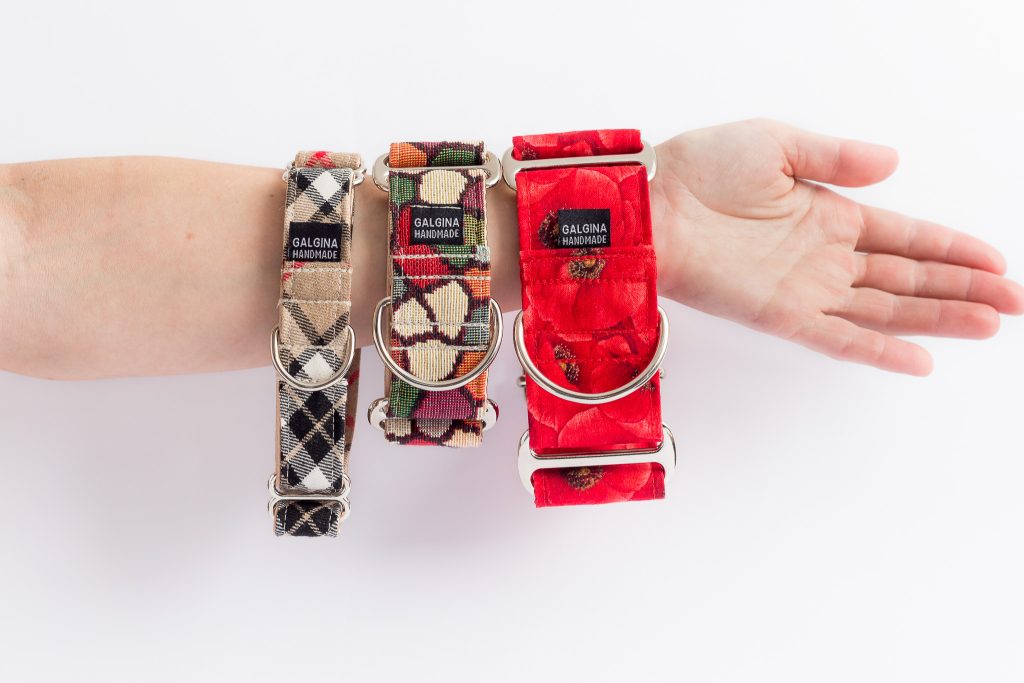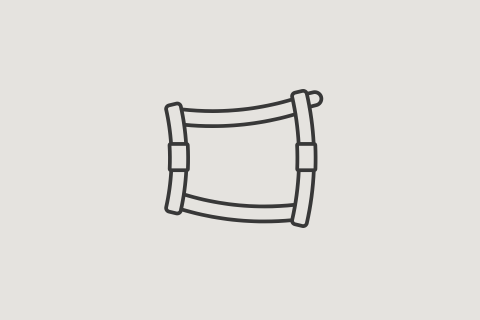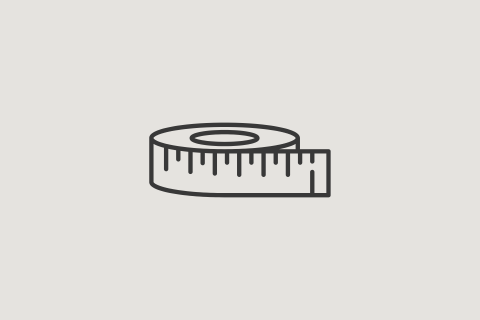Choosing the width of the collar
Collars are Galgina’s most recognizable and desirable product, especially among sighthound owners. However, our customers often struggle with choosing the right width of the collar. Since there are no strict rules in this regard, I will provide some guidelines and tips to help you decide on the right collar for both sighthounds and other dogs.
Improvizing
If you’re choosing a collar for the first time or are more of a visual person, create improvised collars for easier visualization. Cut pieces of paper or fabric in different widths and try them on your dog’s neck as if collars were real. This will give you a sense of how different widths complement your pet and which option is more pleasing to your eye.
Observe whether the improvised collar restricts movement, if the dog refuses to move with it, or if it covers the entire length of their neck. Also, observe if the collar touches the lower jaw while your dog is sitting. If you notice any of these, the collar is too wide.
When observing how the improvised collar looks on your dog, keep in mind that a real collar will be bulkier and heavier. Besides trying them on, browsing through social media for different collar styles on various dogs can also help with decision-making.
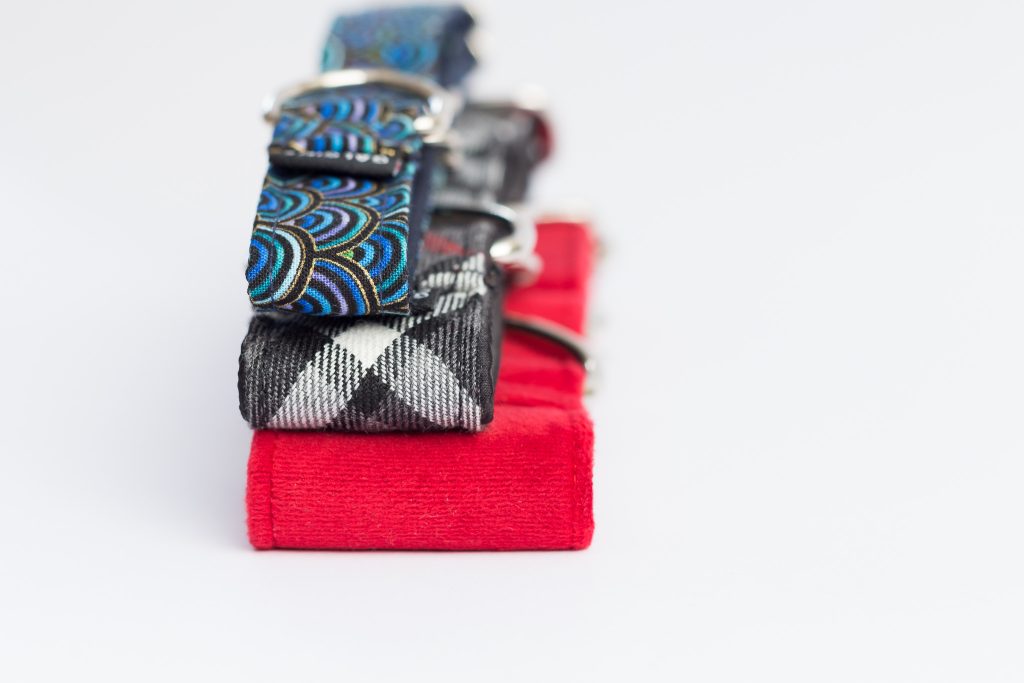
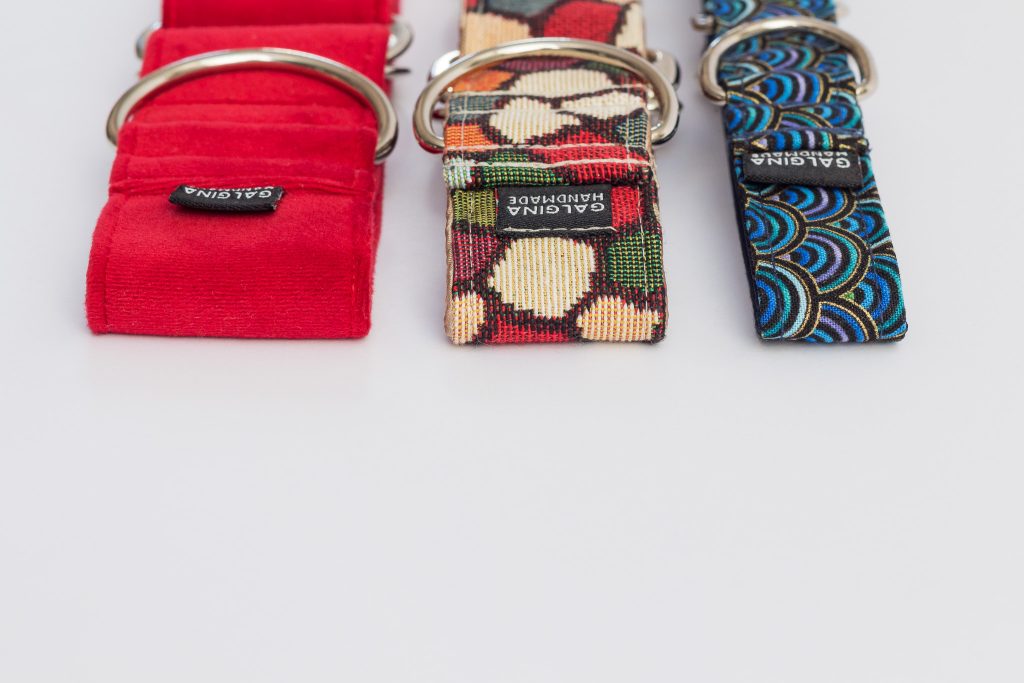
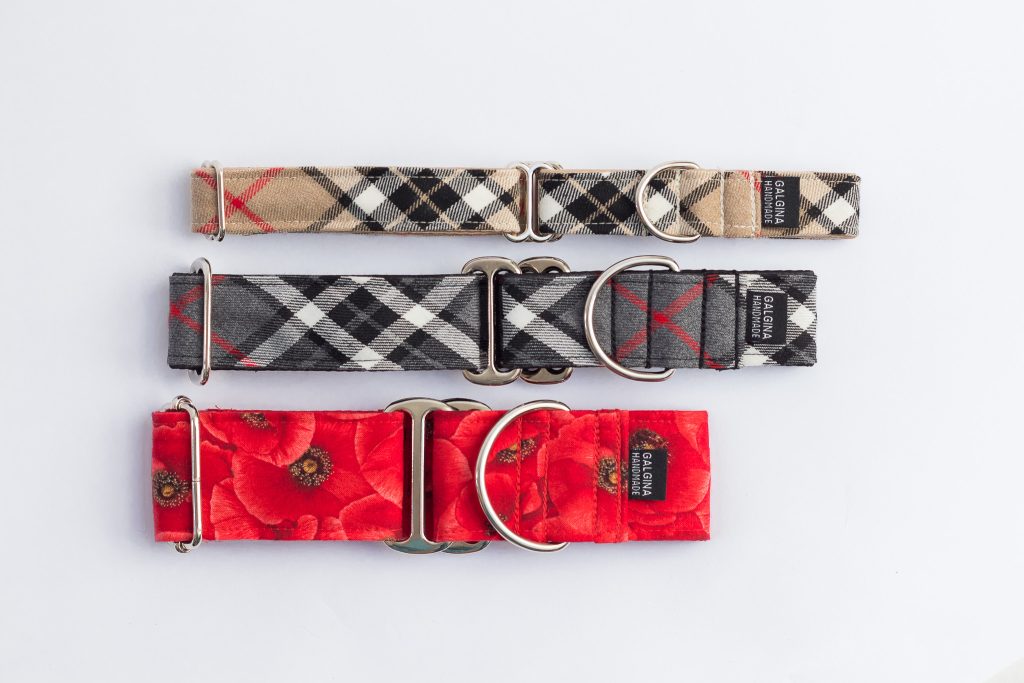
Purpose of Use
Consider the intended use of the collar. Will you be using it for walking your dog on a leash or do you need it for other situations? A wider walking collar can provide more comfort for a dog with a long and sensitive neck. However, if you’re choosing a collar for other purposes such as attaching identification tags, a GPS tracker, or other accessories, a narrower collar might be more suitable.
Collar as a Whole
Buyers often focus only on the appearance of the fabric strap and how its width will adorn their dog’s neck, but it’s essential to consider the collar as a whole. This is especially true for complex collar types like martingales, which consist of two separate loops and multiple metal parts. These collars contain more material, giving them a distinctive and slightly bulkier appearance.
Galgina collars are among the bulkier, more compact, and heavier ones on the market.
The width of Galgina collars is the same throughout the entire circumference, without any narrowing with narrower closing systems commonly seen in wide leather collars. This means all metal parts are wider than the collar strap, adding significant weight. These metal parts are crucial, not just for appearance, but also for ensuring smooth functionality, even with stronger dogs. Generally, the wider the collar, the larger the dog is intended for, with its other components becoming noticeably more substantial with each increase in width. It’s worth noting that even for buckle collars, we use strong and substantial buckles not recommended for small dogs.
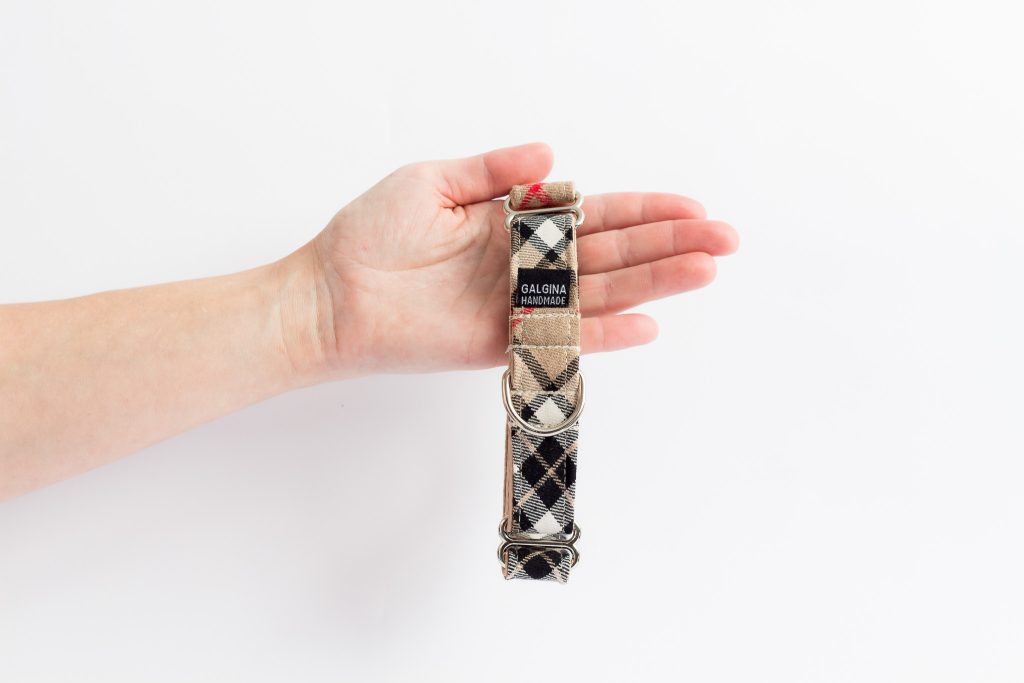
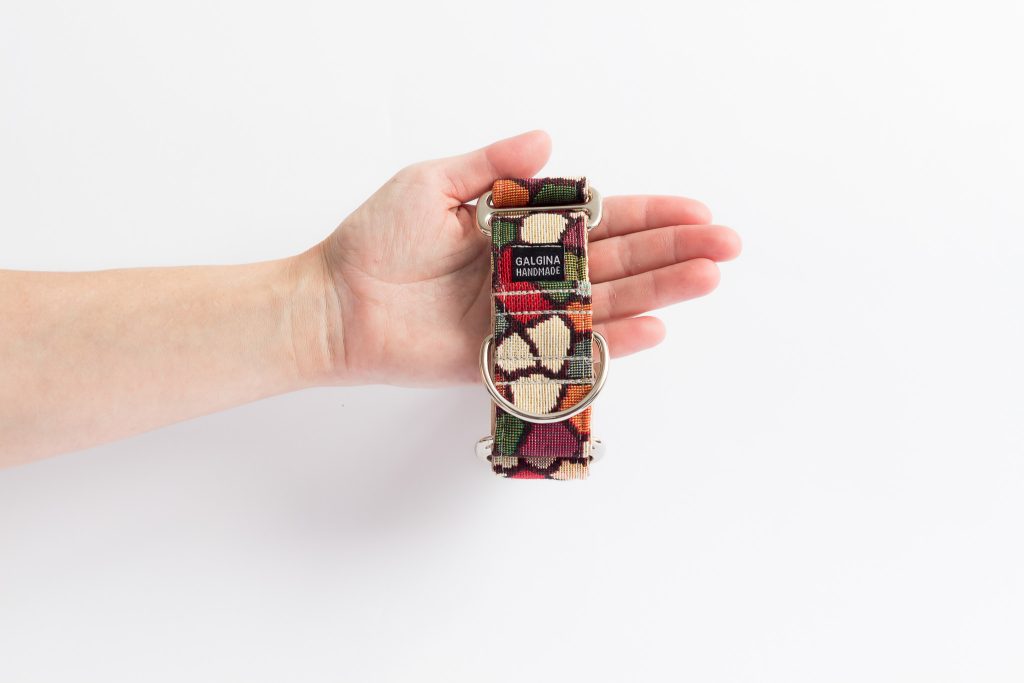
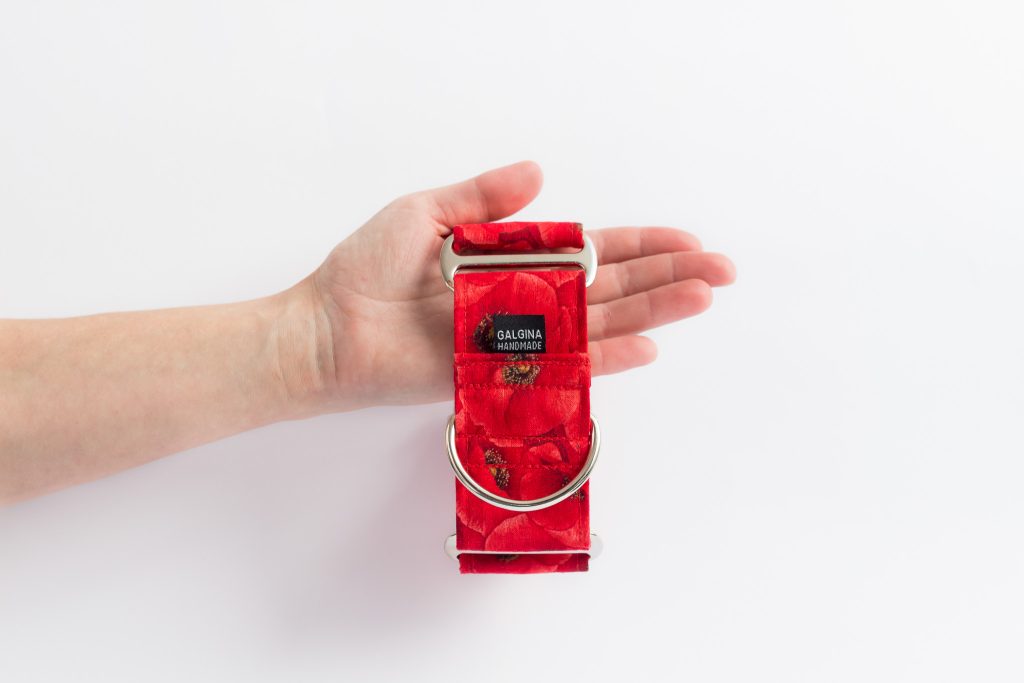
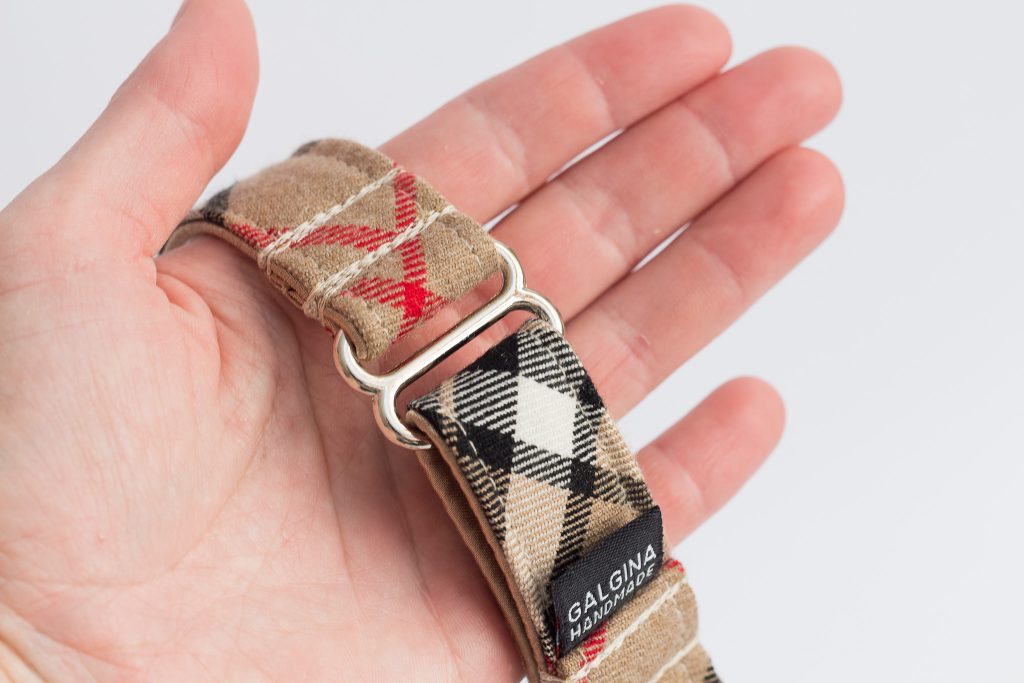
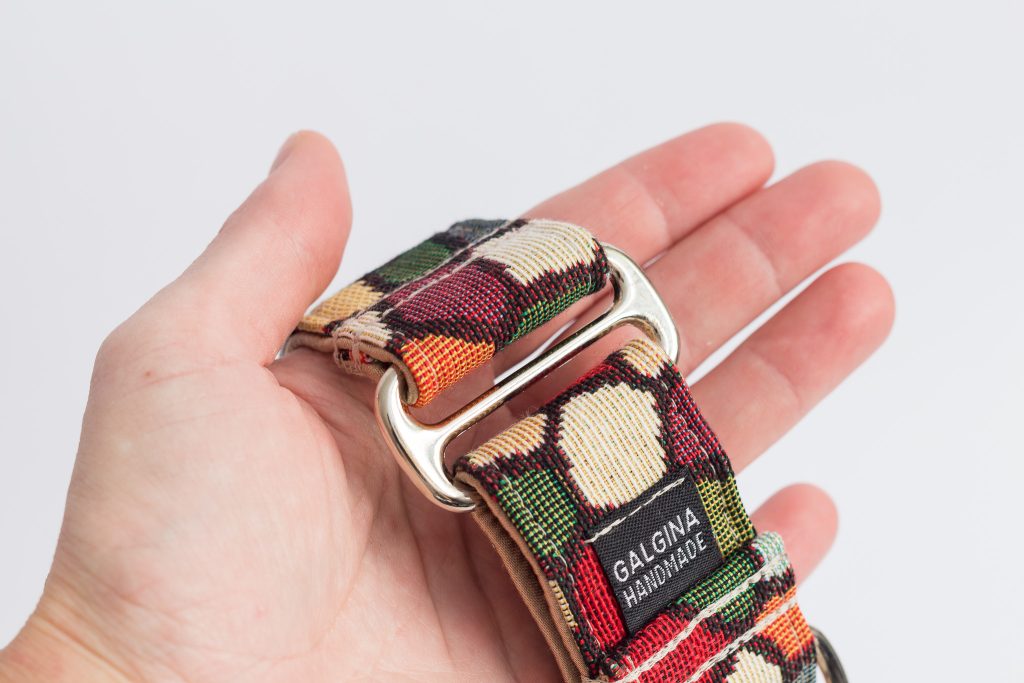
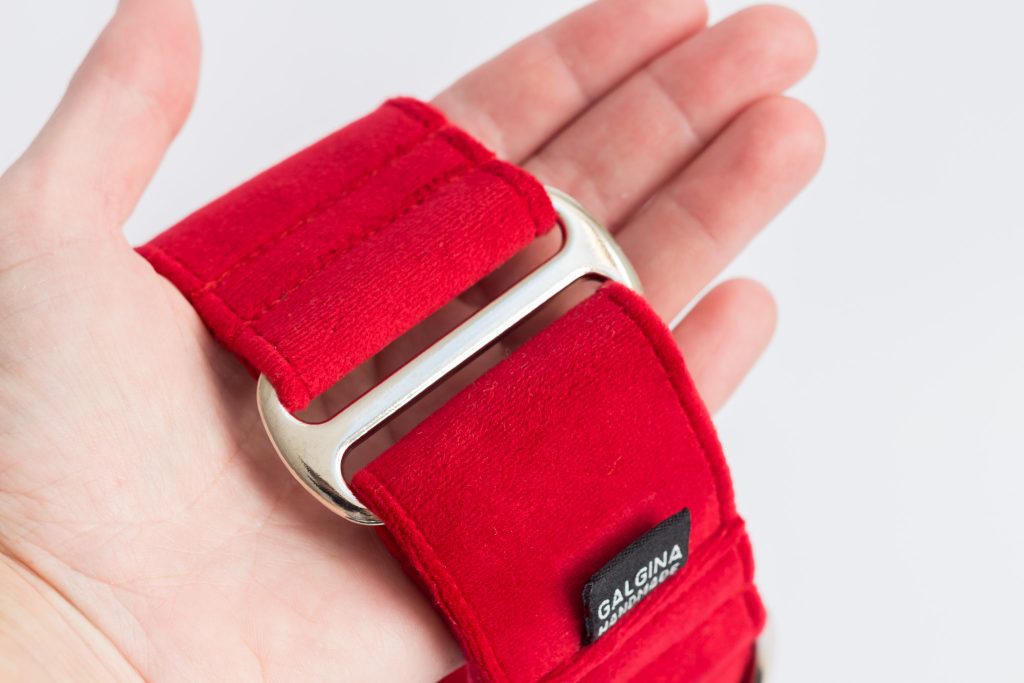
Other general tips
Customers often seek universal guidance and inquire about the “right width” for a specific breed. Unfortunately, it’s challenging to strictly limit choices based on breed because dogs of the same breed can still vary considerably in size and weight, as can the preferences of their owners.
When opting for wider collars than what you’re used to, it’s usually best to progress gradually, selecting a collar only “one size” wider. This minimizes the chances of being surprised by the width and bulkiness. If, after some time, you find yourself desiring an even wider collar, you can then choose the next larger width. The most careful consideration should be given to selecting a martingale collar, as this collar model is the most substantial. A non-tightening collar appears less robust than a martingale of the same width.
Due to the characteristics and limitations of sewing machines, combinations of collar models, widths, and sizes are not entirely arbitrary. We have listed the minimum dimensions for which a particular collar can still be ordered with each collar type. We recommend reviewing these before placing an order.
Walking collars for sighthounds
Italian greyhounds
For older puppies, smaller, medium-sized (standard) adult Italian greyhounds, customers typically choose a collar width of 2,5 cm. Such a collar has the gentlest metal parts and is the lightest, weighing approximately 50 g. Caretakers of (above-average) large Italian greyhounds also most often opt for a width of 2,5 cm, but those who prefer wider and bulkier collars occasionally choose a width of 3,8 cm. A 5 cm collar is not suitable for Italian greyhounds.
Whippets
Choosing the width of a collar for Whippets often causes the most doubts, probably because owners want very wide collars but do not anticipate that other characteristics (weight, bulkier appearance) may not suit them.
For younger Whippet puppies not yet accustomed to the equipment and just entering new homes, we recommend a collar width of 2,5 cm. For older puppies and adult Whippets of average size, a collar width of 3,8 cm is most commonly chosen by caretakers, with which they are most often satisfied. Such a collar is not overly bulky, weighing approximately 80-90 g.
Very few caretakers are satisfied with the widest collars, 5 cm in width. They find them too wide, and above all, too bulky and heavy (a martingale weighs approximately 130-140 g) for an average-sized Whippet. Therefore, we recommend a 5 cm wide collar only for those who are confident that they want massive equipment or are not bothered by it, perhaps they already know our collars or their Whippet is among the larger representatives of the breed (neck circumference at least 30, preferably 32 cm or more). If in doubt, to avoid potential disappointment, it’s better to choose a narrower collar, as our experience shows that most caretakers prefer the latter.
Galgos, Salukis, lurchers
In our work, we most often encounter adult Galgos, and for them, customers almost invariably choose a width of 5 cm. In general, we could say that this width is the “right” one for them, but there are exceptions. If you are not a fan of massive equipment, prefer minimalist collars, have a young Galgo/Saluki, or their adult size is well bellow average (neck circumference up to 28 cm), then a narrower 3,8 cm collar is also a suitable choice. For younger Galgo and Saluki puppies, our customers most often choose a 2,5 cm wide collar.
Greyhounds, large lurchers, and other large sighthounds
For large sighthound breeds the guidelines are very similar to those for Galgos. Almost all customers are the most satisfied with 5 cm wide collars and have no major dilemmas when making a choice. A narrower 3,8 cm wide collar is rarely the first choice for caretakers of large sighthounds; they opt for it only if they prefer minimalist collars or have a puppy. A 2,5 cm wide collar is also suitable for very young puppies.
Other dog breeds and mixes
We do not have suitable collars for extremely small dogs without long greyhound-like necks in our range. For others, the guidelines are very similar to those for sighthounds: the larger the dog, the wider the collar he can wear, depending on your preferences and taste. Experience shows that the most neutral (neither too narrow nor too wide) collar width is 3,8 cm. For fans of more delicate, minimalist equipment, we recommend a 2,5 cm wide collar, while for those enthusiastic about wide, bulkier equipment, we recommend collars that are 5 cm wide.
For long-haired and densely coated dogs, consider the possibility that the collar will flatten the fur. If you want the coat to remain extremely lush, voluminous, and without signs that the dog ever wore a collar, it’s better to choose a narrower one. However, if you want the collar to be at least slightly visible through the fur, a wider one may be a better choice.
Considerations before purchasing
The guidelines provided apply to Galgina brand collars, and you won’t be able to apply this information to other providers (and vice versa), so it’s not advisable to buy “blindly.” Choosing the model and width of the collar requires careful consideration since you’ll likely use the collar for some time, and replacements for custom-made products are not possible.
If you still can’t decide which collar would be most suitable for your dog, we can offer individual advice via email. Various data about your four-legged friend will be helpful: breed, size, weight, measurements, past experiences with collars, your needs, and expectations. Together, we’ll surely find the right collar.



